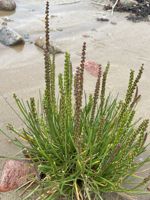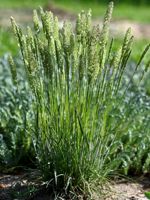Mon-Fri 9am - 5pm Mountain time
Junegrass vs Seaside Arrowgrass
Triglochin maritima
Koeleria macrantha
CUSTOM GROW
NOT AVAILABLE THIS SEASON - MIGHT RETURN
Seaside Arrowgrass is a native perennial commonly found in wetlands, salt marshes, and moist meadows. It is especially suitable for difficult growing sites. Its dense root system helps stabilize soil, while also providing food, cover, and habitat for small animals within the wetland community.
Seaside Arrowgrass is suitable for shoreline stabilization, wetland restoration, and naturalization projects.
Junegrass is a native, low-growing perennial bunchgrass commonly found in prairies and open woodlands. It is a great choice for prairie restoration and naturalization projects or an attractive accent in ornamental plantings. Spear-shaped seed heads rise above the gray-green lower leaves, maturing to a tan color. Flowering earlier than other upright prairie grasses, it greens up quickly in spring and maintains its appeal well into the fall. It is shorter in stature and rarely forms thick stands, which adds to its understated visual appeal.
Adapted to cooler climates, Junegrass thrives in well-drained, rocky, sandy, or gritty soils and can tolerate drought, cold, and high altitudes. It actively grows in spring and fall when soil temperatures are cool, but in areas that are too hot or humid, it may go dormant by late summer.
As a perennial, it dies back to the crown each winter, it will regrow from the base in the spring. Avoid disturbing the crown during late winter to ensure healthy growth the following season.
Seaside Arrowgrass Quick Facts
Junegrass Quick Facts
Toxicity: can be toxic to humans and livestock

